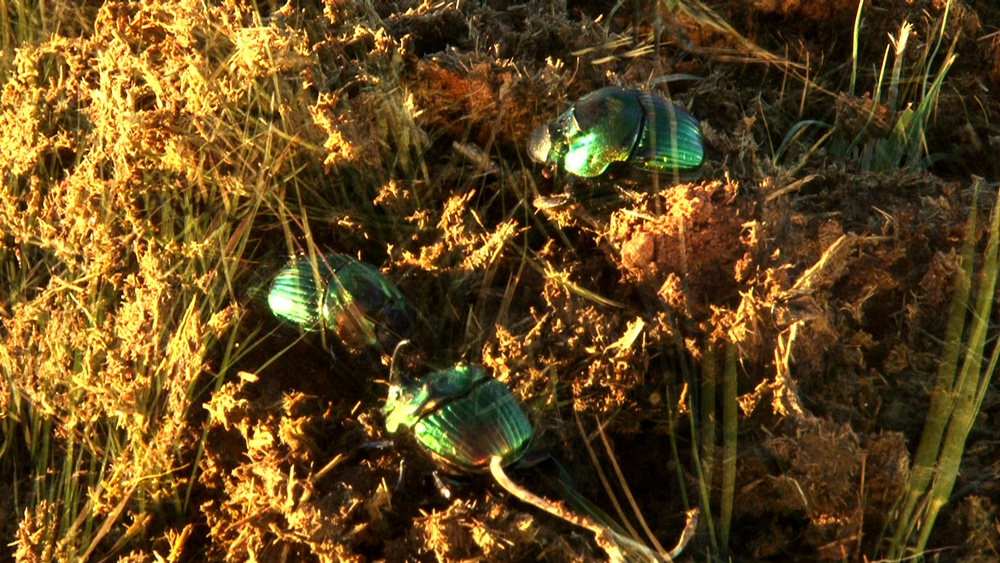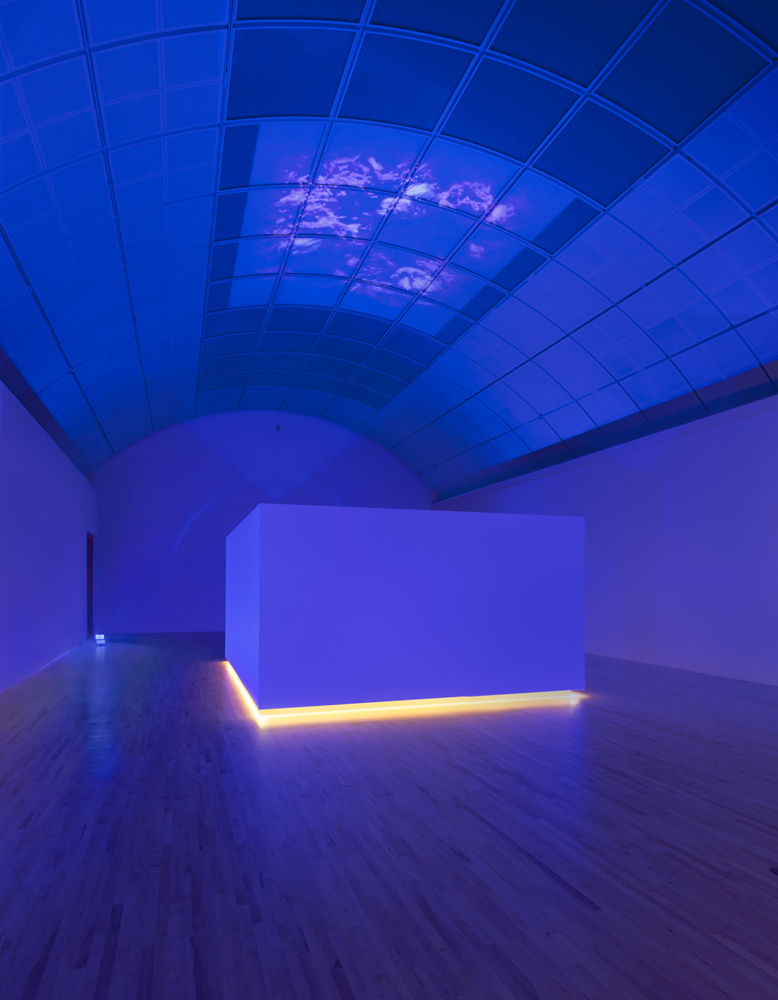Art, literature, music, [and] science are coming
from exactly the same part of what makes us human.
They are all expressions of the same thing
and the way that we relate to the world.
—Jeff Hester, astrophysicist
Long interested in the mysteries of the night sky and the natural world, internationally-recognized artist Diana Thater is fascinated by the dung beetle and its relationship to our galaxy. Inspired by a recent scientific study that revealed how the jewellike beetle uses the Milky Way for nocturnal orientation, Thater developed an entirely new kind of film and video installation to ponder the vastness of the universe and to convey aesthetically the sublime aspects of the cosmic imagination.
For her “Beta Space” project, (commissioned by the San Jose Museum of Art in celebration of its 45th anniversary year), Thater benefited from the scientific and technological resources of Santa Clara Valley, long a national and international center for astronomical research and observation. She met with an astrobiologist at NASA Ames Research Center in Mountain View, California; traveled to the four-thousand foot summit of Mount Hamilton in nearby San Jose to view some of the first images taken of the Milky Way at Lick Observatory in the 1890s; and with Puragra GuhaThakurta, astronomer and astrophysicist at the University of California, Santa Cruz, learned how recent advances in technology have allowed astronomers to view distant corners of the universe. GuhaThakurta, a leading expert on galaxy evolution and formation, advised Thater on the selection of galactic animations for her enveloping installation.
Thater excites the imagination by presenting exquisitely beautiful images of the world and beyond. She shows us that art and science are not all that different—both disciplines require observation and thought, a leap of faith, and a moment of grace.
The Reality of Nature is Far More Wondrous Than Anything We Can Imagine
by Rory Padeken, assistant curator
Sponsors
-

-

- Myra Reinhard Family Foundation
- Melanie and Peter Cross
- Theres and Dennis Rohan
- In-kind support from David Zwirner, New York/London
-
 Display technology from Samsung
Display technology from Samsung

